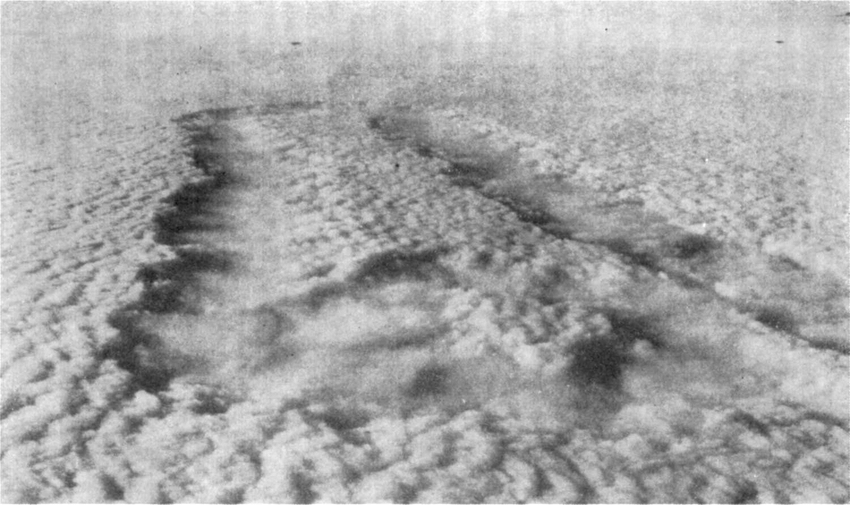The public is confused about the so-called CO2 emission that the government is talking about removing from the environment. But what exactly is dry ice CO2, and how does it relate to cloud seeding? Let’s explore the ins and outs of this process and uncover the potential hazards that it presents.
Cloud seeding is a weather modification technique that aims to enhance precipitation in clouds by introducing certain substances. The technology sprays particles of salts like silver iodide and chloride on clouds using special aircraft, rockets, or dispersion devices on the ground. One of the most common chemicals used for cloud seeding is dry ice, which is solid carbon dioxide. The idea behind using dry ice is that it provides a nucleus around which water droplets can form, ultimately leading to increased precipitation.
It can build pressure or displace normal air when used in large quantities for cloud seeding. This can potentially cause problems, especially in enclosed or poorly ventilated spaces. Additionally, the release of carbon dioxide into the atmosphere worsens the climate.
It also presents hazards due to the use of dry ice CO2. Dry ice is extremely cold, with a temperature of around -78.5 degrees Celsius (-109.3 degrees Fahrenheit). This extreme cold can pose a risk to those handling the substance, as it can cause frostbite on contact with the skin.
Glaciogenic seeding can be carried out in several ways:
- Ground-Based Generators: These are stationary devices that release silver iodide particles into the atmosphere, relying on natural air currents to carry them into targeted clouds.
- Aircraft Seeding: Specially equipped aircraft can fly directly into clouds and release silver iodide or other seeding agents, allowing for more precise targeting.
- Rocket Seeding: In some cases, rockets can be used to deliver seeding agents deep into storm clouds.

Many people have raised concerns about the impact of cloud seeding on the environment and public health. In recent years, there have been reports of continous cloud seeding activities affecting the air quality in Delhi and other parts of India. This has led to extreme cold weather conditions and even hailstorms in certain regions. The public is confused about the so-called CO2 emission that the government is trying to remove from the environment.
Cloud seeding is happening everywhere, and it could be causing serious health problems in ways you aren’t aware of. The release of dry ice CO2 into the atmosphere can lead to respiratory issues, especially for those with pre-existing conditions such as asthma or allergies. Additionally, the manipulation of weather patterns through cloud seeding can disrupt the natural balance of ecosystems, leading to long-term environmental consequences.
It can pose risks when used in large quantities. One of the primary concerns is the potential for dry ice CO2 to build up pressure within an enclosed space. The rapid sublimation of dry ice can generate significant amounts of CO2 gas, leading to a buildup of pressure that may result in explosions or ruptures. Proper ventilation and monitoring are critical to prevent such incidents.

Another hazard associated with dry ice CO2 is its capacity to displace normal air in an environment. Because CO2 is heavier than air, it can accumulate at low levels and displace oxygen, leading to a lack of breathable air. This can pose serious risks to individuals working in confined spaces or poorly ventilated areas where dry ice CO2 is being used for glaciogenic seeding.

Dry Ice Carbon Dioxide Poisoning
Dry ice is frozen CO2. Exposure to high levels of CO2 can lead to various symptoms, ranging from mild discomfort to serious severe health effects. For starters, should an individual experience overexposure the first symptom could be difficulty breathing or shortness of breath. this occurs because elevated CO2 levels can displace oxygen in the air, leading to decreased oxygen levels in the bloodstream.
Additionally, feeling dizziness or lightheaded can also occur when exposed to elevated levels and this can be due to reduced oxygen levels in the blood, which can result in decreased blood flow to the brain. Headaches are another common symptom that can also result due to blood vessels in the brain becoming dilated.
As exposure or elevated levels increase, individuals can further experience vomiting, disorientation, and increased heart rate. In severe cases of carbon dioxide exposure loss of consciousness can also occur. This of course, would require a medical emergency and requires immediate medical attention.
It’s important to note that the severity of symptoms depends on the concentration and duration of carbon dioxide exposure. If you suspect that you or someone else is experiencing symptoms of carbon dioxide exposure, it’s essential to move to a well-ventilated area with fresh air and seek medical attention if symptoms persist or worsen.

Additionally, proper ventilation and monitoring of carbon dioxide levels are essential in environments where CO2 buildup may occur to prevent adverse health effects. Unlike CO2 gas, liquid or frozen CO2 (called dry ice) is dangerous when handled. Proper insulated gloves and a face mask is recommended whenever handling dry ice.
Glaciogenic seeding involves introducing substances into clouds to encourage the formation of ice crystals, which can then grow into raindrops or snowflakes. Dry ice is sometimes used for this purpose because its extreme coldness can efficiently cool down air parcels and promote ice nucleation. However, there are several considerations:
- Dispersion Challenges: Effectively dispersing dry ice into the desired cloud area is not straightforward. Factors like wind patterns, cloud structure, and the size of dry ice particles all play a role, making it difficult to achieve uniform seeding and predictable outcomes.
- Potential Unintended Consequences: While seeding aims to enhance precipitation, there’s a risk of inadvertently altering cloud behavior in unintended ways. This might include changes in precipitation patterns, downwind effects, or a reduction in precipitation in other areas. More research is needed to fully understand the complexities of cloud dynamics and the potential for unintended consequences on the water cycle.
- Safety of Delivery: Seeding often involves the aerial deployment of dry ice, requiring specialized equipment and trained personnel. The risks associated with handling dry ice on airplanes or drones, coupled with flight hazards, demand strict safety protocols.
- Environmental Considerations: While CO2 is naturally present in the atmosphere, large-scale releases from glaciogenic seeding could potentially contribute to greenhouse gas emissions.
- Lack of Consistent Results: The efficacy of dry ice seeding is still an area of active research. While some studies show positive results, others demonstrate no significant increase in precipitation. These inconsistencies highlight the complexity of cloud dynamics and the need for further scientific investigation.
Both the handling of dry ice and its application in glaciogenic seeding require significant safety measures and careful planning. These include:
- Proper Training: Anyone handling dry ice should receive thorough training on its hazards and safe handling procedures. This includes understanding the risks of frostbite, asphyxiation, and explosive pressure buildup.
- Ventilation: Dry ice must be used in well-ventilated areas to prevent the accumulation of CO2 gas. Carbon dioxide detectors should be used in confined spaces where dry ice is being handled.
- Personal Protective Equipment (PPE): Insulated gloves and safety glasses are essential when handling dry ice. Full PPE may be needed for large-scale applications.
- Proper Storage: Dry ice should be stored in insulated containers that are not airtight, allowing CO2 gas to escape.
- Thorough Planning and Monitoring: Glaciogenic seeding operations should be carefully planned, considering weather conditions, environmental factors, and potential unintended consequences. Monitoring the results of seeding is crucial for understanding its impacts.
- Research and Development: Continued research is vital to better understand the complexities of cloud seeding, refine seeding techniques, and assess the ecological and environmental impact of this technology.
Why Are Governments Gaslighting the Public on Geoengineering?
Ref: https://zerogeoengineering.com/2024/why-are-governments-gaslighting-the-public-on-geoengineering/
THE TECHNOLOGY OF FRAUD AND DECEIT
by THE TRI-STATE NATURAL WEATHER ASSOCIATION, INC.
The purpose of this publication is to expose the fraud, deceit and dangers of uncontrolled and unregulated cloud seeding; to reveal to the public that cloud seeding is not rainmaking and that 90% of all cloud seeding is employed expressly for the purpose of decreasing rainfall. Also, that cloud seeding is the weapon responsible for our serious air pollution problems.
Link to full Cloud Seeding The Technology of Fraud and Deceit
Ref: https://zerogeoengineering.com/wp-content/uploads/2016/10/76603548_3.pdf
https://njlaw.rutgers.edu/collections/gdoc/hearings/7/76603548/76603548_3.pdf
Source: NIH, Co2meter,
Also Read:
